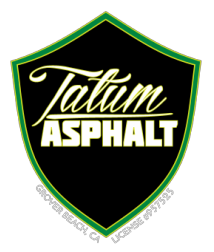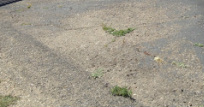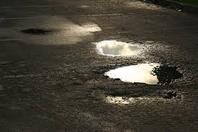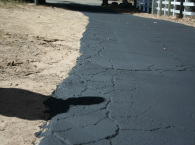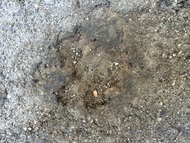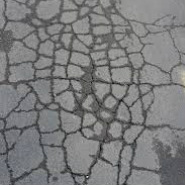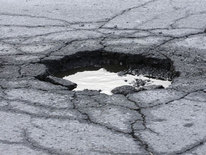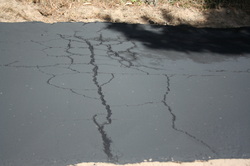Asphalt Maintenance & Repair
Preventive maintenance is less expensive, if early detection and repair of minor defects are taken care of before major corrective action is necessary. A parking lot is an investment, as is a building, just as a building must be maintained, so must a parking lot/area.
Asphalt repairs are necessary within time as asphalt surfaces begin to wear and break down as they are repeatedly exposed to elements such as traffic wear and tear, water penetration, surface oxidation from the suns UV rays and oil and chemicals that drip from leaky vehicles. Surface breaks of any kind allow moisture to percolate below the surface, where it undermines the integrity of the pavement. The liquid asphalt that binds the materials together begins to lose its natural resistance to water, allowing it to penetrate beneath the surface damaging the base that supports it. Once this occurs the asphalt pavement loses its elasticity and can quickly fall prey to a number of different types of deterioration including cracks and potholes.
Asphalt repairs are necessary within time as asphalt surfaces begin to wear and break down as they are repeatedly exposed to elements such as traffic wear and tear, water penetration, surface oxidation from the suns UV rays and oil and chemicals that drip from leaky vehicles. Surface breaks of any kind allow moisture to percolate below the surface, where it undermines the integrity of the pavement. The liquid asphalt that binds the materials together begins to lose its natural resistance to water, allowing it to penetrate beneath the surface damaging the base that supports it. Once this occurs the asphalt pavement loses its elasticity and can quickly fall prey to a number of different types of deterioration including cracks and potholes.
Do you use machines to apply the sealer?
We seal driveways using natural fiber brushes and rubber squeegees. This ensures the sealer is evenly spread over the surface.
I have grass and weeds growing through cracks in my driveway. How do I remove the grass and weeds growing through my driveway? Will you completely remove the grass and weeds before sealing my driveway?
We will scrape grass and pull weeds growing above the surface of the asphalt, and attempt to remove the debris from the cracks. We can not, however, guarantee complete removal. Unless the vegetation is killed prior to removal, it will return. We recommend using a weed killer for a few weeks before having the driveway sealed.
I have trees in my yard dropping leaves. Will they stick to the sealer?
During the first few hours after application, leaves may stick to wet sealer. They are easily removed after the sealer has cured by sweeping.
Can you apply two coats the same day?
A second coat can not be applied until the first coat has cured completely. Typically it must be scheduled over two days, depending on the square footage of the project. A smaller driveway could be done in a single day, weather permitting. Larger driveways and/or parking lots would need to be scheduled over 2 days for 2 coats.
We seal driveways using natural fiber brushes and rubber squeegees. This ensures the sealer is evenly spread over the surface.
I have grass and weeds growing through cracks in my driveway. How do I remove the grass and weeds growing through my driveway? Will you completely remove the grass and weeds before sealing my driveway?
We will scrape grass and pull weeds growing above the surface of the asphalt, and attempt to remove the debris from the cracks. We can not, however, guarantee complete removal. Unless the vegetation is killed prior to removal, it will return. We recommend using a weed killer for a few weeks before having the driveway sealed.
I have trees in my yard dropping leaves. Will they stick to the sealer?
During the first few hours after application, leaves may stick to wet sealer. They are easily removed after the sealer has cured by sweeping.
Can you apply two coats the same day?
A second coat can not be applied until the first coat has cured completely. Typically it must be scheduled over two days, depending on the square footage of the project. A smaller driveway could be done in a single day, weather permitting. Larger driveways and/or parking lots would need to be scheduled over 2 days for 2 coats.
Before you take on a costly asphalt replacement, contact us today. It just takes minutes to have an experienced, asphalt contractor walk your asphalt area and make recommendations – those minutes can sometimes save you thousands.
Costing you cents per sqft vs. dollars per sqft!!
Costing you cents per sqft vs. dollars per sqft!!
